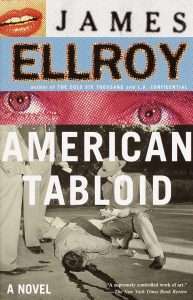Adrian Collins's Blog, page 25
March 26, 2025
INTERVIEW: Maithree Wijesekara
Shortly before the release of her debut novel, The Prince Without Sorrow, we got the chance to speak with Maithree Wijesekara. Her novel is being described as “the debut fantasy sensation of 2025” and with multiple special editions, including a well-known book box subscription, The Prince Without Sorrow looks set to be a hit. I was more than a little excited when an early ARC landed on my doorstep and feel very lucky to have been able to have enjoyed it already and can’t wait to talk about it with more readers.
Thank you so much to Maithree Wijesekara for taking the time to talk to us about all things to do with The Prince Without Sorrow, her inspirations, Studio Ghibli, and what we can look forward to from her next.
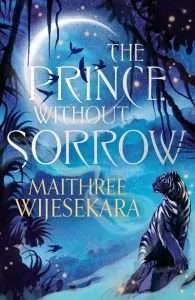 [GdM]
Firstly, how would you pitch The Prince Without Sorrow to someone who knows nothing about your novel?
[GdM]
Firstly, how would you pitch The Prince Without Sorrow to someone who knows nothing about your novel?
[MW] The Prince Without Sorrow is a fantasy novel that is loosely inspired by Emperor Ashoka of the Mauryan Dynasty of Ancient India. It follows Prince Ashoka of the same name. He is considered an outcast by his father, the tyrannical Emperor Adil for opposing his brutal onslaught against the mayakari (witches). It also follows Shakti, a mayakari raised to follow principles of nonviolence, who witnesses the murder of her aunt and village at the hands of the emperor. In an act of revenge, she casts a curse that changes the course of her and Ashoka’s lives. Both must learn to grapple with the consequences of power: to take it for themselves or risk losing it completely.
[GdM] You’ve said that The Prince Without Sorrow was inspired by the Emperor Ashoka and the Mauryan Empire, what made you pick this figure and era?
[MW] Emperor Ashoka is a notable figure in Buddhist history, mostly known for his deviation from cruelty to nonviolence. This change is actually noted through a change in epithets: he goes from Ashoka the Cruel to Ashoka the Great. The era itself, I was less inspired by – the reason being that there isn’t much information available about the Mauryan Empire.
Arguably, as a historical figure, there’s not a lot of information about Emperor Ashoka either. In fact, much of his life is mixed with myth and legend. There are pillars still standing today that bear his edicts, as do stories that tell of him having killed 99 brothers to take the throne.
I was always fascinated by Emperor Ashoka’s adoption of nonviolence after committing a brutal military campaign in Kalinga (modern day Odisha). What led him to change course completely? Was it a difficult transition? Did the guilt of bearing the loss of thousands of lives weigh on him? Was he ever forgiven? Would it be harder to adopt principles of nonviolence or go down a path of violence? That last question was, in part, how Prince Ashoka of the book came wandering into my head. This fictional Ashoka took the emperor’s arc and reversed it. While his story isn’t necessarily the same as his real-life inspiration (the novel isn’t historical in the slightest), there are nods here and there to Emperor Ashoka that I hope those who know of him would appreciate.
[GdM] Straight from the powerful prologue in The Prince Without Sorrow I wanted to learn more about the mayakari – the witches who can speak to nature spirits, commune with the dead, and curse the living. What was your inspiration for them?
[MW] Who doesn’t love witches. A group of powerful women with dangerous abilities is always exciting to read about. However, because I’m cruel, I wanted to limit them, and have that limitation exist of their own volition. Imagine being able to curse the living and raise the dead, only to purposefully reject using such power because of the hurt it could cause others. This was where the code of nonviolence came in.
Much of the mayakari code and way of thinking is inspired by Buddhist philosophy. When the mayakari claim that casting curses or raising the dead result in negative karma, it’s loosely based on Buddhist belief that the actions you take in your current life will affect the next one, be it negative or positive. For example, your accrued karma could be so bad that you might be born as a slug in your next life, and probably won’t live very long, either. For the mayakari, cursing the living and raising the dead are some of the worst forms of suffering you could inflict on others.
It’s significant then for Shakti, who already questions the pacifist code she’s bound to, to enact a curse. She rejects the teachings Jaya has taught her. At this point, she doesn’t really care for a code that’s been agreed upon for centuries. All that fuels her is a need for vengeance. To be honest, if I was in Shakti’s shoes, I’d probably do the same.
[GdM] I was fascinated by the sibling dynamic between Arush, Aarya, and Ashoka. Is it nature? Is it nurture? How have they all become the way they are?
[MW] The Maurya siblings are an interesting spectrum of personalities, aren’t they? Both nature and nurture influence a personality, but I do like to blame Emperor Adil, which means that I’d be placing most of the responsibility on nurture.
Arush is what happens when you are the favored oldest child. He is the firstborn, and therefore first-in-line to the throne. He expects the world, and it’s enough to give him a big head. Aarya is what happens when you are an only daughter whose ego is fed by an equally arrogant father but is criticized by her mother. She’s a daddy’s girl in the worst way possible, and a near-perfect replica of Adil. Ashoka is the result of having an abusive and emotionally distant father and a considerate mother. He makes a conscious effort to mimic the parent he loves the most, which isn’t Adil. Though the emperor becomes a metaphorical ghost for all three siblings, it’s Ashoka who finds himself the most haunted by their father.
[GdM] Both Shakti and Ashoka are trying to change the world for the better, through different means. Do you think either of them has the right idea?
[MW] I think this depends on context. Yes, both Ashoka and Shakti want the same thing – peace for the mayakari – but have markedly different ways of how to get there. Their responses might just be a direct result of how they were raised.
Ashoka only knows violence from his father, and he sees what damage it can cause innocent women. For him, nonviolence is the obvious answer. On the other end of the spectrum, Shakti has been taught to abide by the mayakari’s pacifist code, but the murder of her aunt (who espouses these ideals) shows that nonviolence won’t stop them from being persecuted. For her, violence must be combated with violence.
I’m cynical, so I find early Ashoka to be very idealistic (and he acknowledges this, too). While wanting to achieve peace without spilling blood is the ideal, I think that people are people. Violence is innate. Ashoka’s ideals of nonviolence can thrive in a perfect society, but the problem is that he doesn’t live in one. Realistically, there will never be a perfect society. In the Ran Empire, pacifism won’t help him or the mayakari. In this world, there cannot be change without violence. History will tell you the same.

Author Maithree Wijesekara, Photo by Chau Tran
[GdM] I am an absolute sucker for mythical beasties, love the giant leopards and the winged serpents in this world. What more can you tell me about them?
[MW] Leopards and snakes are a standard feature in the subcontinent, and I wanted to incorporate them into my world, albeit with a fantastical twist. Granted, the ‘fantastical twist’ for the giant leopards is that they’re simply very large, furry cats that could snap you in half with their jaws and who you can also ride into battle. Horses are cool and all, but imagine a huge melanistic leopard charging you at full speed? Absolutely terrifying.
The winged serpents came about in a random way. There was a YouTube video I saw of a Paradise Flying Snake gliding from a forest canopy and was subsequently disturbed by. It didn’t so much as fly but rather glided for a few seconds before gravity brought its body back down. Still, the video stayed in my head. Snakes are already scary, and the thought of one flying towards me was frightening. For some inexplicable reason, I took this irrational fear and turned them into an even more frightening beast in the world of the Obsidian Throne trilogy. Winged serpents have all the features of a snake in our world (venomous and all), except that they grow to enormous heights and can fly.
[GdM] In your author’s note, which was included in my ARC of The Prince Without Sorrow, you talk about your love of Studio Ghibli and their tales of humanity’s impact on nature. How did they influence your world here?
[MW] The Studio Ghibli films have influenced me quite a bit, and I think any fan of the films can spot where said inspiration is presented. For The Prince Without Sorrow, it was Princess Mononoke in particular that influenced me. The film explores the destruction humans lay upon the earth, and nature is personified in the form of wild gods. It’s a beautiful, bloody, and mesmerizing film.
While I don’t use the concept of gods in the trilogy, the nature spirits act as personifications of the natural world, too. When nature thrives, so does its spirit. When nature withers, the spirit becomes ill or angry. In the worst-case scenario, they can die. However, they can be appeased with the help of the mayakari, who are the only ones able to understand and communicate with the spirits because they’re connected by magic and their attachment to the natural world. Unfortunately, the continued persecution of the mayakari makes this difficult to achieve, as Ashoka finds during his tenure as governor of Taksila.
[GdM] I’m always curious about how an author approaches the process of writing their books. Could you please describe yours? Do you plan in detail, or do you wing it as you go? Do you have a rigid writing routine, or is it more fluid?
[MW] I think I’m halfway between a plotter and a pantser. Once I have an idea, I like to let it sit and marinate in my head for a while, for however long it takes. Sometimes, I will write random lines that pop up in my head on paper or in my Notes app that I come back to later. Other times, I write down lyrics from songs that I feel fit the atmosphere of the story, or create a mood board.
When I’m ready to sit down and write, I like to create a rough outline of the major plot points and character arcs – a ‘skeleton’ of sorts. Planning chapter-by-chapter feels restrictive, so I avoid that. Once the rough outline is in place, it leaves me to work around the skeleton and let my imagination run wild.
Because I work part-time, my writing routine needs to be fluid. I don’t like to write on the days I work as a dentist. It’s difficult to come home after a particularly stressful day and muster up enough creative energy to write (for those that can – I applaud you). Instead, I write on my days off. On those days, the Pomodoro Timer is my best friend. Too many hours staring at a screen leaves me antsy, so I’ve learned to give myself small breaks, and makes me more productive.
[GdM] You say you have a never ending TBR pile – same for me – have you read anything awesome lately? What’s your current read like?
[MW] I recently finished reading Those Opulent Days by Jacquie Pham. The novel is an historical murder mystery set in 1920s French-colonial Vietnam. It’s a great portrayal of class tensions, the abuse of power, and the complicated relationships between family and friends.
[GdM] Are you able to share what is up next for you writing wise?
[MW] I’m currently editing book two of the Obsidian Throne trilogy, as well as finishing up the first draft of the third. Because I love to give myself more work, I’m also tinkering with an old side-project. It’s an urban fantasy (I must stay in the genre somehow) that’s very loosely inspired by a rather infamous Sri Lankan queen. The common thread so far is that I seem to like taking inspiration from lesser-known historical figures.
[GdM] Maithree, thank you so much for taking the time to chat to Grimdark Magazine about The Prince Without Sorrow. We really appreciate it!
Thank you!
Read The Prince Without Sorrow by Maithree Wijesekara
The post INTERVIEW: Maithree Wijesekara appeared first on Grimdark Magazine.
March 25, 2025
REVIEW: The Unworthy by Agustina Bazterrica
The Unworthy is the new post-apocalyptic horror from Argentinian author Agustina Bazterrica, who burst onto the international literary scene with her previous novel, the critically acclaimed Tender is the Flesh (one of Grimdark Magazine’s Top 10 Scariest Books According to a Horror Lover).
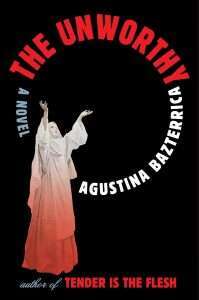 The Unworthy takes us to a dystopian setting in the wake of climate disaster. While the outside world succumbs to chaos, with cities underwater and human civilization in anarchy, the narrator finds relative safety cloistered within the convent of a mysterious religious cult. As a low-ranking novice, she must follow all rules diligently or face violent punishment.
The Unworthy takes us to a dystopian setting in the wake of climate disaster. While the outside world succumbs to chaos, with cities underwater and human civilization in anarchy, the narrator finds relative safety cloistered within the convent of a mysterious religious cult. As a low-ranking novice, she must follow all rules diligently or face violent punishment.
The narrator records her life on scraps of paper with whatever writing implements she can find, even using her own blood as ink. Her writing has a feverish quality, often interrupted mid-thought or even in the middle of a word. Many of the words and phrases are crossed out, revealing the quick evolution of her thoughts as she frantically scribbles her story.
Although The Unworthy introduces a lot of great ideas, it feels like more of a collection of fragments than a fully fleshed out novel. The Unworthy pulls in too many directions—ideological extremism, ecological disaster, feminism, sapphic romance—but none of them feels complete. Aside from the love story, which proves to be surprisingly touching and the best part of the novel, the plot doesn’t progress much beyond the back-of-the-book synopsis.
Despite these shortcomings, The Unworthy shines in Agustina Bazterrica’s clipped writing style, brilliantly translated from Spanish by Sarah Moses, who also served as translator for Tender is the Flesh.
Altogether, The Unworthy is a quick read, but well worth immersing yourself in the fever dream-like atmosphere expertly conjured by Bazterrica’s prose. The Unworthy is worth checking out for fans of Bazterrica’s previous novel, Tender is the Flesh. However, readers may be left wanting more from this rather scant story.
Read The Unworthy by Agustina BazterricaThe post REVIEW: The Unworthy by Agustina Bazterrica appeared first on Grimdark Magazine.
March 24, 2025
EXCERPT: Dissolution by Nicholas Binge
Dissolution is the latest novel by bestselling Ascension author Nicholas Binge and it is also one of the 2025 releases that the GdM team are most excited about. Dissolution is out today from Penguin Random House and we are absolutely stoked to bring you an excerpt from this sci-fi techno thriller to celebrate its release.
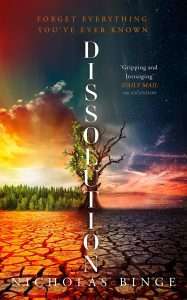 Binge will have you travelling through time and memory with Maggie as she battles to save her husband from whoever has been stealing Stanley’s memories. If she does what she is told they can go back to their normal life, but Maggie might be risking more than just the memory of their lives together. The very course of human history hangs in the balance.
Binge will have you travelling through time and memory with Maggie as she battles to save her husband from whoever has been stealing Stanley’s memories. If she does what she is told they can go back to their normal life, but Maggie might be risking more than just the memory of their lives together. The very course of human history hangs in the balance.
Read our excerpt from Nicholas Binge’s Dissolution below:
TRANSCRIPT NO. 273 : Margaret Webb
DATE STAMP: 11 AUG. 2021
11 Hours, 0 Minutes, and 0 Seconds Until Dissolution
You’ve got eleven hours until reset. You need to tell me exactly what happened.
Where am I?
We’ve been over this, Maggie. It’s not important. The only thing that’s important is that you focus on me.
What do you mean “it’s not important”? I don’t know where I am. I don’t know who you are. How can that possibly not be important?
I’m Hassan. Do you remember me?
No . . . I mean, yes. I think. The name rings a bell.
Take a second. Breathe. You’re in a daze.
Have we . . . ? We’ve met before, haven’t we?
We have.
Where is Stanley? Is he okay?
That is precisely what we are trying to find out.
What do you mean? Oh God, has something happened to him? Is he safe?
Calm down. We don’t have time. I need you to focus—to remember what’s going on. Let’s start by focusing on the present. Tell me about your surroundings. Talking it through will help. Tell me where we are.
We’re in a . . . Is this an empty swimming pool?
Of sorts. Describe it to me.
What the hell is going on?
You’re disoriented. Your brain is recovering from the shift. Describe to me what’s going on around you—the small details. What do you see? What does it sound like? What time of day is it?
I’m . . . we’re inside. Is that right? The light is artificial, and there are no windows, like we’re underground. The pool is empty—totally drained— and I’m starting to question if it’s even a pool. It’s too blank, too clinical. More like a giant bath basin.
Where are we, the two of us?
Surely you can see it as well as I can. Oh God, the sunglasses. Are you blind?
I’m not blind. We’re just establishing a cognitive baseline. Think of this like a sobriety test; I need to check you’re properly focused, like counting how many fingers are on my hand.
Okay. Well, we’re set up at this desk right in the middle of the basin. You and me, and no one else, facing each other. It’s deserted. My arm is hooked up to an IV. Why? Am I sick?
What can you hear?
Right now? The only sound is our voices echoing through the room.
Good. That’s very good, Maggie. More. What’s on the table?
There’s . . . a small cylindrical container, like a pill bottle, as well as a glass of water. There’s a pen and paper and a recording device, as if I’m in some kind of interrogation room. But I’m not. I’m in a pool. Why am I in a pool? Why am I hooked up to whatever is in that IV bag?
The why is not important. You don’t need to worry about that right now.
Oh really? Well, young man, what do I need to worry about?
We need to know exactly what happened that led you here. It’s absolutely crucial, for all of us, that we know this. You need to tell me, in as much detail as you can, about the first time you saw me.
I can’t . . . remember. I can’t remember anything. What are you doing with that container?
This pill will help jog your memory.
I’ve not taken pills from strangers in a good few decades.
If you don’t start remembering soon, we will run out of time, and this will all be for nothing. The pill is not dangerous, I promise. It will just help clear the fog in your brain. Please. It’s very important that we understand what took place. We don’t have much time. We have to find Stanley.
Okay, okay. Fine. Keep your socks on. Jesus. If I weren’t eighty‑three, I’d think you were up to something.
Urgh, that’s awful. I can feel that right in my throat. It stings. What the hell was that? And, at the risk of repeating myself, what the hell is going on?
Stanley isn’t safe. None of us are safe. Something happened, and I need your help to find out exactly what. Think back: When was the first time you saw me?
What?
We have to go from the beginning. We have to see every moment. It’s the only way we can know for sure. Close your eyes. Let your memories come back. Go to the first time you see me.
Okay, I’ll try, but I don’t know what you expect is going to . . . Wait. What on earth?
What is it?
I can see it. It’s as though . . . This is strange—this isn’t like a normal memory at all. I can see the whole room in front of me. It’s like I’m there.
That’s the pill starting to work. It’s a memory enhancer.
This is more than just an enhancer. I can hear the kettle boiling. I can taste the dryness on my tongue from the glass of wine I had last night. I’m not remembering, Hassan. I’m there.
Read Dissolution by Nicholas BingeThe post EXCERPT: Dissolution by Nicholas Binge appeared first on Grimdark Magazine.
March 23, 2025
Science-Fiction and Horror: Two Sides of the Same Coin
‘In Space, Nobody Can Hear You Scream’, the famous tagline for Ridley Scott’s 1979 film Alien, encapsulates so much of what ties science fiction and horror together in a single sentence: powerlessness. It’s a concept we return to again and again as humans. When I deliver workshops on horror writing and I get students to identify their top five scariest scenarios, almost all of them have something to do with a loss of control: over yourself, over your environment, over the world. It’s a bedrock of the genre.

Sure, it makes sense that classic sci-fi settings do horror so well. Where else are you as utterly powerless as in space, where you can’t rely on oxygen, on gravity, on all the things that you, as a human being, have evolved to need in order to survive? The same logic applies to other sci-fi concepts, too. Take time travel. Oh, it seems all exciting on the surface, zipping around in a TARDIS seeing any period of history we want, but in reality, the concept is terrifying. As individuals and societies, we are so reliant on a consistent linear understanding of time. Everything we do is built around it — our relationships, our beliefs, our sense of self. Once you start pulling at the seams of the things we implicitly rely on, the things we trust, that’s when you find yourself back in terrorland. In my novel Ascension, playing with time was an easy way to ramp up the horror for the main characters. After all, if you can’t rely on the seconds passing the way you expect them to, how can you rely on anything?
But for me, the similarities between science fiction and horror run deeper than just powerlessness and loss of control. What ties both of them together is the way they deal with humans confronting things we do not understand. In sci-fi, that can sometimes come across with a sense of awe, as it does with Arthur C. Clarke’s classic Rendezvous with Rama, or it can be associated with a sense of impossible dread: this is the Lovecraftian realm of cosmic horror, where things are so beyond our comprehension we would go mad even to consider them. Inherent in both, and I think core to the entire science-fiction genre, is the idea that there are things out there that we do not comprehend, and possibly cannot comprehend. The meeting point between us, stupid monkeys that we are, and this incomprehensible vastness is where the magic happens.

Author Nicholas Binge, Photo by Allys Stafford
Horror, in many ways, is doing the same thing, but rather than trying to tackle the vast unknown out there, it’s dealing with the vast unknown in here (imagine me pointing at my chest emphatically). The great 13-century poet and Sufi mystic Rumi once wrote “Heart is a sea, language is the shore.” I’ve always loved this image: that deep within us there is a vast ocean of feeling and emotion that we can only access the edges of with the words we have to hand. The more language, the longer the shore, and the more of the sea we can understand. And sure, some of the more distant sea will wash up on the shore now and again, the currents and shifts bringing it to the surface. But there will always be the deep ocean — a Mariana Trench — so distant from our ability to describe it that we’ll never really be able to know what lives there. Reaching that trench is what horror is all about: we tell these stories to lengthen the shore, to send out boats, to discover the unnameable and incomprehensible depths inside ourselves.
When I write, I see the two genres as two sides of the same coin, external and internal, both at their heart trying to unravel the complexity of what it means to be human by pitching us up against things outside of our capacity for language and thought. My new novel, Dissolution, is very much my take on this duality. In it, the strange science-fictional concepts my characters are forced to tackle are vehicles to delve inwards, to dive off the shore and into the sea and see what lives at the bottom of the Mariana Trench inside us all.
Read Dissolution by Nicholas Binge
The post Science-Fiction and Horror: Two Sides of the Same Coin appeared first on Grimdark Magazine.
March 22, 2025
REVIEW: Companion (2025)
Companion (2025) was a film I was back and forth reviewing for Grimdark Magazine due to being a science fiction black comedy. If I had to define its genre, I’d say it’s cyberpunk lite. A story that could basically be summarized as “What if Blade Runner starred the machines and had really stupid people after them?” Despite the comedic elements or perhaps because of them, Companion deals with a lot of incredibly dark subject matter and touches on numerous themes of both technology as well as socialization.
 It’s sort of an interesting comparison to Ex Machina, which had the idea of our machines as wholly inhuman but mankind confuses them for people. This is instead the story of us making our machines human enough that we just use it as an excuse to treat them as how we already treat ourselves (which is like shit). There’s a strong feminist theme to the movie that underscores the comedy and slasher movie vibe as our heroine struggles to understand what her “boyfriend” now wants to murder her.
It’s sort of an interesting comparison to Ex Machina, which had the idea of our machines as wholly inhuman but mankind confuses them for people. This is instead the story of us making our machines human enough that we just use it as an excuse to treat them as how we already treat ourselves (which is like shit). There’s a strong feminist theme to the movie that underscores the comedy and slasher movie vibe as our heroine struggles to understand what her “boyfriend” now wants to murder her.
The marketing spoiled a lot of this movie in a manner like Captain American: Brave New World as one of the biggest twists comes around the fifteen minute mark but is spoiled by the poster. Indeed, I wasn’t even aware it was meant to be a surprise until I watched this movie with my nieces. They had no familiarity with the movie and thus were completely taken off guard when it happened. If you can watch the movie unspoiled or with people who don’t know anything other than the title, then I recommend it. Otherwise, note, that the rest of the review will treat this initial reveal as a given.
The premise for Companion is that Irish (Sophie Thatcher) and Josh (Jack Quaid) are a sickeningly happy couple that are visiting their Russian friend’s house for the weekend. It is an incredibly luxurious house in the middle of nowhere and they’ll be joined by several friends. It is in the near future with self-driving cars and a variety of other luxury items that seem to be available only to the super rich, though Jack isn’t one of them. One of the guests, Kat (Megan Suri), is initially very hostile to Iris and she doesn’t know why. Sergey (Rupert Friend) gets aggressive with Iris and events spiral out of control when he’s killed.
Which turns out to have been the plan all along as Iris discovers that’s what she was programmed to do all along. Iris, much to her shock and horror, is a companion robot for Josh. A sort of sexy Tamagotchi that was given a set of fake memories and a willingness to please that overrides all other considerations. Rather than the superhumans of Blade Runner, companions are deliberately made to be no smarter or stronger than “regular” humans with the ability of their owners to make them even dumber or weaker. Josh is fond of his companion robot but no more so than a pet and arguably even less than that as he’s willing to sacrifice her as part of his plan to murder Sergey then rob him. Unfortunately, he’s careless with his master control and he’s turned up Iris’ survival instincts.
Much of Companion is, essentially, not so veiled commentary on “nice guy” misogyny. Josh is good looking and willing to put on a pleasant enough face around his girlfriend but only when she’s subservient to him. Ultimately, she’s a convenience and someone that he gets increasingly violent toward as he finds his plans thwarted. We also discover just how fragile Josh’s self-esteem is. The fact Jack Quaid is the kind of actor that would be the dorky but handsome lead in a romantic comedy, makes his transformation even more shocking. Like a slowly boiling kettle, we also see how the escalation grows from dismissiveness to furious rage.
Companion’s humor comes from the same source as the movie’s terror. The murderers are not particularly competent at their crimes but that doesn’t mean they’re not dangerous. All of them, even the more sympathetic ones, think of Iris as an appliance that needs to be destroyed. The absolute lack of sympathy from everyone around here is surprisingly well realized. Sophie Thatcher beautifully embodies both the idealized retro-girlfriend with her 1950s-esque inspired look as well as the increasingly capable Iris as she realizes her only way out may be blocked by what she was made to be. I had a lot of fun with this movie.
The post REVIEW: Companion (2025) appeared first on Grimdark Magazine.
March 21, 2025
REVIEW: The Sorceress in Exile by D.H. Hoskins
If you somehow still thought political fantasy is boring, then D.H. Hoskins is here to prove you wrong in The Sorceress of Exile. This second instalment in The Athyziad series has all the riveting intrigue and brutal backstabbing that made The Council of Athyzia so compelling, except now we go even bigger, darker, and deeper. Oh, and can’t forget… here there be dragons! 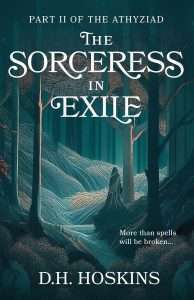 Picking up two years after the disastrous ending of the first book, The Sorceress in Exile continues the tale of our loveable sorceress Nauveena as she hopelessly seeks a way to reverse the damage done by the unexpected outcome of the Council. And because desperate times call for desperate measures, Nauveena soon finds herself embarking on a suicide mission of a quest through enemy territory that will test the tenuous bonds with her last remaining friends, all while she stubbornly tries to hide being tempted by the most unlikely potential ally of all…
Picking up two years after the disastrous ending of the first book, The Sorceress in Exile continues the tale of our loveable sorceress Nauveena as she hopelessly seeks a way to reverse the damage done by the unexpected outcome of the Council. And because desperate times call for desperate measures, Nauveena soon finds herself embarking on a suicide mission of a quest through enemy territory that will test the tenuous bonds with her last remaining friends, all while she stubbornly tries to hide being tempted by the most unlikely potential ally of all…
Now, The Council of Athyzia absolutely stunned me with its unique premise of “what happens after the dark lord is defeated?”, and the bold ending left me extremely curious to see Hoskins’ ambitious vision for the rest of the series. And honestly, The Sorceress in Exile was totally not the sequel that I was expecting, but in the best way imaginable. Yes, it might lean much more into the familiar traditional fantasy conventions and tropes, but at no point does it even come close to being predictable or boring. I mean, how could it if you throw unruly monks, mysterious assassins, undead hordes, perilous seafaring journeys, untrustworthy allies, and dragons into the mix?!
And as much as I enjoyed the contained setting of Athyzia in book 1, I absolutely loved how the world of Jenor just blew open as Nauveena travels the lands now that she has been exiled. We get to dive so much deeper into all the different (clashing) races, cultures and factions that we saw represented in the council during book 1, and I really appreciated how that only increased the stakes and made the world and characters feel even more alive. Moreover, the way that Hoskins explores topical (and simultaneously frustratingly timeless) themes of war, propaganda, (religious) zealotry, and authoritarianism through a ‘safe’ fantastical lens is nothing short of masterful, which makes this story even more nuanced and impactful than it already was.
Though similarly to in book 1, it was the complex characters and their increasingly complicated interpersonal relationships that were the true highlight of the story for me. Nauveena’s heart wrenching inner conflict was written so incredibly well, and I loved seeing her being confronted with all the devastating consequences of her (well intended) actions. Sometimes I didn’t know if I wanted to hug or strangle her, but somehow I just loved drowning in the guilt, anger, grief, regret, shame and despair right along with her.
Moreover, the side characters really get their time to shine in The Sorceress in Exile, and I adored the increased role of the ever-enigmatic Osseomancer (who is maybe my favourite character? Sorry not sorry). It was so compelling to see how Nauveena’s desperation and secrecy started to affect the already tenuous relationships between her and her last allies, and especially the dynamic between her and Domitrius (a.k.a. the best underdog magician monk) and her emotionally vulnerable friendship between Venefica and Nauveena had me on the edge of my seat. Also, there are zero on-page romantic elements in this series, but I was totally rooting for a love triangle between Nauveena, Venefica and the Osseomancer because the sexual tension was sizzlingggg! I said what I said.
Now, while I think The Sorceress in Exile has a much smoother start compared to The Council of Athyzia simply because of the fact that all the groundwork has already been laid, I did still feel like there were some wobbles in the pacing. Hoskins’ style is quite introspective, reflective and descriptive, which sometimes made the slower parts of the story feel a bit repetitive and extra slow for me, especially in combination with the flashback interludes filling in the time between the end of book 1 and the start of book 2. Yet around the midway point, the action and stakes quickly ramped up and we started to get much more of the sharp dialogue that I so enjoy between these compelling characters.
And then talk about an explosive ending full of bold twists and turns that had me gasping in shock! Again, who knew that political fantasy could be so pulse-pounding and exhilarating? The Athyziad series is simply everything you could ever wish for in an epic, high-stakes political fantasy, and I can’t recommend it highly enough to anyone who is looking for a comfortingly familiar yet refreshingly inventive fantasy adventure that will leave you hungering for more in the best way possible.
Thank you to the author for providing me with an eARC in exchange for an honest review. All opinions are my own. The Sorceress in Exile is scheduled for release on 28 March, 2025.
The post REVIEW: The Sorceress in Exile by D.H. Hoskins appeared first on Grimdark Magazine.
March 18, 2025
REVIEW: Future’s Edge by Gareth L. Powell
Future’s Edge is the latest offering from sci-fi author and space opera veteran Gareth L Powell, and features some of his trademark poignancy balanced with humour in the face of dire odds. This book is billed for fans of James SA Corey and Becky Chambers and finds a nice balance between sweeping epic stakes and intimate found-family vignettes.
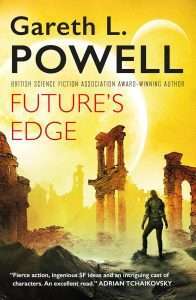 Set in the near-ish future, mere decades after humanity joined the space faring age, Future’s Edge is set as our galaxy faces the annihilation of all sentient life by a mysterious race of physics-defying beings known as the Cutters. The last remnants of multiple species (including humanity) have fled to the edge of the galaxy in the hope of escaping to the next spiral arm before the Cutters find them. This is where our protagonist Ursula Morrow has been held up for two years, running some semblance of a bar, in the refugee camps waiting for the man who got her off Earth just in time.
Set in the near-ish future, mere decades after humanity joined the space faring age, Future’s Edge is set as our galaxy faces the annihilation of all sentient life by a mysterious race of physics-defying beings known as the Cutters. The last remnants of multiple species (including humanity) have fled to the edge of the galaxy in the hope of escaping to the next spiral arm before the Cutters find them. This is where our protagonist Ursula Morrow has been held up for two years, running some semblance of a bar, in the refugee camps waiting for the man who got her off Earth just in time.
Ursula was once an archaeology student on an extrasolar dig, investigating Precursor ruins that dated back to before the dinosaurs were wiped out. On that excursion she met Jack, and spent all her free time with him. In her distracted, love-struck state, she made a mistake and got herself infected by an ancient alien virus that made her almost indestructible.
When Jack shows up at her bar – married to someone else – and tells Ursula she may be the key to a galaxy-saving weapon, she’s not exactly jumping for joy to shoot off across the stars with the happy couple, into certain danger and almost-certain death. Circumstances, however, leave her little choice but to save the day.
Future’s Edge comes with more of Powell’s humanising takes on ship AI and the exploration of human-AI relationships that could arise. There’s plenty of contemporary commentary on the divisiveness of “AI” in our current society and in a few years time I’m sure this will be an easy way to date the novel.
While not as dark as some of Powell’s other work, the grimdark fans out there will doubtless enjoy the key feature of the genre that is hope in the face of desperation. This is a story of desperation, and the price of failure is the destruction of all sentient life forms, so the stakes are pretty high. The characters have sacrifices to make – willingly or otherwise – to give everyone else the best possible hope of survival.
At just over 300 pages, Future’s Edge sets a swift pace and, at times, could have benefitted from slowing down a little to allow for a bit more exposition. If you’ve read To Sleep in a Sea of Stars, then Future’s Edge is a bit like that playing on double-speed. Future’s Edge offers a neat little space opera package without the epic page count. It’s compact and punchy, with great ideas and themes that are worth diving into; with some beautiful cover art to boot.
Read Future’s Edge by Gareth L. PowellThe post REVIEW: Future’s Edge by Gareth L. Powell appeared first on Grimdark Magazine.
March 17, 2025
REVIEW: American Tabloid by James Ellroy
Last Updated on March 18, 2025
The thirtieth anniversary of the publication of American Tabloid is the perfect time to experience one of the darkest fictional examinations of the murder of John F. Kennedy. It is more than arguable that his assassination slammed into overdrive the undermining of a segment of the American people’s belief in their government. For those of an academic bent, a reading of Richard Hofstadter’s essay published a year after the Kennedy assassination titled ‘The Paranoid Style in American Politics’ where the right cannot accept society as it currently is and uses demagoguery to undermine and replace it with their approved version, felt of a time then, and most certainly does today. American Tabloid takes all those elements and creates a crime noir tour de force.
The story of Kennedy’s assassination long ago curdled into myth and legend, the Ur-conspiracy of the American dream, an event upon which people of a certain inclination painted their wildest, weirdest, and darkest fantasies as a way of understanding what they believe American secretly is. Cuba, Castro, Communism, the Mafia, grassy knoll, second shooter, Garrison, Stone are all names, peoples and places that have become inextricably entwined into a knot of madness and darkness that people continue to obsess over today.
American Tabloid, written by the great demon dog himself, James Ellroy, examines in heart pounding detail the five years leading up to that terrible day in Dallas. It is, without a doubt, one of the most intensely feverish reading experiences I have ever had the privilege to experience. We all know that Michael Moorcock popped some great pills in the 60s before retiring to his bed on Friday nights and pumping out an Elric novel over the weekend in a fugue-like, ecstatic state. American Tabloid feels exactly like that – a fever dream wrapped around a hectic narrative that grips you by the throat from page one and never, ever lets go.
Told through a tight third person narrative via three characters – Pete Bondurant (World War II marine, Howard Hughes’s right-hand man and Jimmy Hoffa’s hitman), Kemper Boyd (scion of a fallen dynasty, FBI agent and Hoover’s inside man in the Kennedy campaign) and Ward Littel (failed Jesuit seminarian, FBI agent lawyer and Mob hater), American Tabloid examines in minute details their personal interactions, the power dynamics between each man, and how contact with the Kennedy family corroded them in all sorts of damaging ways.
American Tabloid can be read in a number of ways. There is its surface charm; a bleak, noirish tale of how various elements within American society – organs of the state itself such as the FBI and CIA – used anti-Castro Cubans and the Mafia to undermine the rule of law in their war against Communism. This version of the novel, where fictional and real life characters smash together, is exciting, violent, tense and a brilliant example of how to sustain reader interest where we all know how November 22, 1963 turns out, but are captivated by the sheer power of the writing which carries us along until the grim conclusion.
American Tabloid is a singular achievement – an examination of the links between money and power, and how both are, in effect, the same. The supposed good guys (Hoover, the FBI, the CIA) are just as bad as the bad guys (the Mafia) in that all they wish is to accumulate power on the one hand, and wealth on the other, and that these needs are indistinguishable. It is this truth that exposes the larger truth about American power – that with enough money, violence, or a combination of both, anything, no matter how ghastly, can be achieved. And that anyone threatening that power structure, whether from rogue elements inside and outside that structure, up to and including John F Kennedy, leave themselves exposed to the ultimate sanction.
I was utterly gripped and compelled by American Tabloid. The pace is breakneck, the atmosphere is feverish and the writing staccato in tone and delivery, the violence hyperactive, amoral, and cinematic. The racism and homophobia are off the charts, so be warned, but are totally true to the era.
American Tabloid is grimdark to the core – an examination of morally damaged individuals helping to birth a new dark age, where power and its accumulation is the only things that matters. Ellroy’s creed is this: that if good men have to be sacrificed on the altar of expediency, then whet that knife faster and show me their throats, God damn it all to Hell.
Read American Tabloid by James EllroyThe post REVIEW: American Tabloid by James Ellroy appeared first on Grimdark Magazine.
March 16, 2025
REVIEW: Witch Queen of Redwinter by Ed McDonald
I sometimes do a thing when I know that a book is the last in a series I have enjoyed, where I get a hold of it as soon as possible, but then I put off reading it because I don’t want the story to end. I did that with Ed McDonald’s final instalment in The Redwinter Chronicles, Witch Queen of Redwinter. I first discovered McDonald as a writer with the first Redwinter novel, Daughter of Redwinter. I promptly read the second novel, Traitor of Redwinter, and read his completed Raven’s Mark trilogy while waiting for this third book. It’s taken me a little while to brace myself to return to Harranir for the final time and complete this trilogy, but oh boy, the read was worth it.
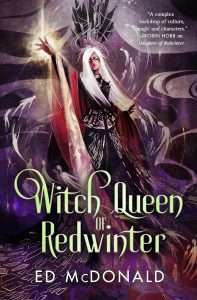 McDonald starts Witch Queen of Redwinter with a very handy synopsis of the events that have come before. So, although you must have read the earlier two books before picking this up, there is no urgent need for a reread. Necromancer Raine, our protagonist, has narrowly escaped execution and finds herself trapped in the magical wasteland of The Fault. The Fault is disintegrating around her as she moves through it with her two companions, Saunvant and Esher, former Draoihn who risked everything to save their friend, desperately searching for a way to escape and save their home.
McDonald starts Witch Queen of Redwinter with a very handy synopsis of the events that have come before. So, although you must have read the earlier two books before picking this up, there is no urgent need for a reread. Necromancer Raine, our protagonist, has narrowly escaped execution and finds herself trapped in the magical wasteland of The Fault. The Fault is disintegrating around her as she moves through it with her two companions, Saunvant and Esher, former Draoihn who risked everything to save their friend, desperately searching for a way to escape and save their home.
Why does their home need saving? Well, that would be because of Ovitus LacNaithe. Ovitus put the ‘traitor’ in Traitor of Redwinter and, frankly, is one of my most disliked characters ever. But because of his treachery (and power-hungry stupidity), Ovitus has unwittingly allied himself to a darker power. If that power is crowned, the world will be plunged into darkness. The stakes are higher than ever, and Raine will have no choice but to use all her terrible powers if they are to have any hope of survival.
Witch Queen of Redwinter is a well-paced, immersive fantasy and satisfying conclusion to The Redwinter Chronicles. All the threads from the previous books have been brought back in, and I don’t feel like anything has been left unresolved. Having completed both McDonald’s series, I would say Redwinter is not as typically grimdark as The Raven’s Mark trilogy. However, this is still a very dark and gritty story; it’s hard not to be when the main character must use death magic. It certainly makes you question if the ends justify the means. The battles are very well written, and the physical aspects seem realistic to the pseudo-medieval era in which McDonald has set the series. I would say they are up there with John Gwynne’s writing in terms of how easy they are to visualise and follow the action.
Fans of McDonald’s writing will be pleased that his characters remain the driving force of Witch Queen of Redwinter, as they have been in all of his other novels. The unflinching friendship between Raine, Saunvant, and Esher is a massive part of this story. However, friendship doesn’t seem quite strong enough to describe their relationship. To lift from the novel: ‘It was like being born in the same forge. It wasn’t romance, and it wasn’t sibling comfort. It was something that few people will ever understand, and I was glad that they didn’t have to. These three characters have been through a crucible together, and McDonald clearly shows the strength of that bond in Witch Queen of Redwinter. I know that focusing on characters this way won’t be for everyone, but it made the risks feel so much more real for me. It is the personal cost that Raine may have to pay if she fails. People don’t fight to save the world; they fight for the people they love. We also see the importance of Raine’s other friendships in the story, including the one with my favourite character, Castus LacClune. I am happy that he remained a part of the narrative and that we saw more of him in Witch Queen of Redwinter.
Witch Queen of Redwinter was a strong conclusion to The Chronicles of Redwinter, and although I’m sad to see the series end, I think that Ed McDonald has written a cracking epic fantasy trilogy here. If you’ve not yet read it and like your fantasy mixed with complex magic, political intrigue, and some battle skirmishes, I think you should pick this up.
Read Witch Queen of Redwinter by Ed McDonaldThe post REVIEW: Witch Queen of Redwinter by Ed McDonald appeared first on Grimdark Magazine.
March 15, 2025
REVIEW: House of Muir by Luke Tarzian
How can I do justice to House of Muir, the second full-length novel in Luke Tarzian’s Shadow Twins series and the sequel to Vultures? Luke Tarzian’s work is the doom metal of grimdark fantasy, a symphony of sludgy down-tuned prose that plumbs the greatest depths of human grief and suffering while somehow finding hope within a universe of chaos and decay.
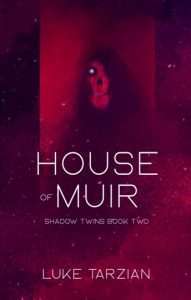 Tarzian’s prose is meticulously crafted, eloquent and sublime in its dark artistry. House of Muir practically begs the reader to slow down, savor each word, and absorb every sensation. The closest point of comparison is the queen of grimdark herself, Anna Smith Spark, although Tarzian has his own distinct style. With his lyrical prose and ability to create a dark, fever dream-like atmosphere, Luke Tarzian can be described aptly as a modern-day Edgar Allan Poe.
Tarzian’s prose is meticulously crafted, eloquent and sublime in its dark artistry. House of Muir practically begs the reader to slow down, savor each word, and absorb every sensation. The closest point of comparison is the queen of grimdark herself, Anna Smith Spark, although Tarzian has his own distinct style. With his lyrical prose and ability to create a dark, fever dream-like atmosphere, Luke Tarzian can be described aptly as a modern-day Edgar Allan Poe.
House of Muir explores themes of life and death, heredity and free will, and the cruelty of time. The novel is a deeply emotional read, dealing with questions both personal and existential. Perhaps most of all, House of Muir is a parable for finding that single ray of light in a world of despair.
Although House of Muir is a dense and often challenging read, there is an irresistible dark beauty that pervades every sentence. Like all of Luke Tarzian’s work, House of Muir is imbued with many layers of meaning and interpretation that reveal themselves slowly but often in striking fashion.
As a scientist, I especially appreciate Tarzian’s depictions of equilibrium and entropy, represented by opposing spirits of balance and chaos, setting up an epic struggle that governs the nature of the universe. According to the second law of thermodynamics, entropy will prevail, an agent of chaos bringing an ever-increasing amount of disorder to the universe. House of Muir is about finding meaning in that chaos, truth in that madness.
For readers new to Tarzian’s world, the best starting point is his masterful novella, The World-Maker Parable, which serves as a prequel to the Shadow Twins series. The World-Maker Parable is just as brooding and poetic as the main books of the series, but it provides a more digestible point of entry.
Altogether, Luke Tarzian has crafted a cacophonous nightmare with House of Muir, establishing himself as the poet laureate of the grimdark community. Rarely has an author achieved this level of literary prowess in the fantasy community. Patrick Rothfuss, Mark Lawrence, and Anna Smith Spark all come to mind. It’s time to add Luke Tarzian to that list.
Read House of Muir by Luke TarzianThe post REVIEW: House of Muir by Luke Tarzian appeared first on Grimdark Magazine.

